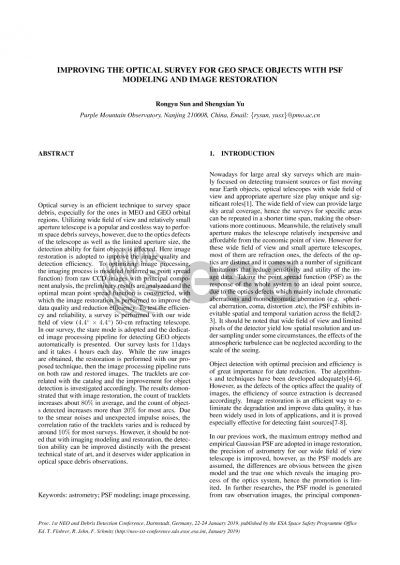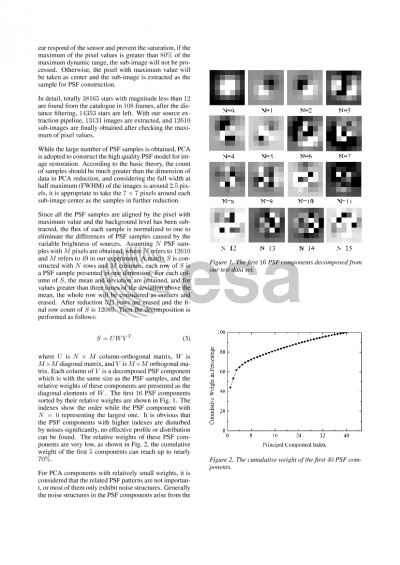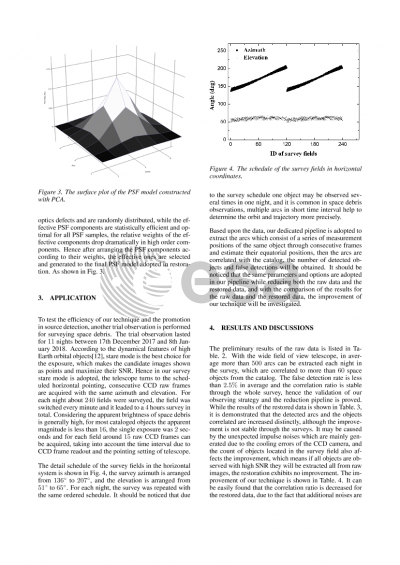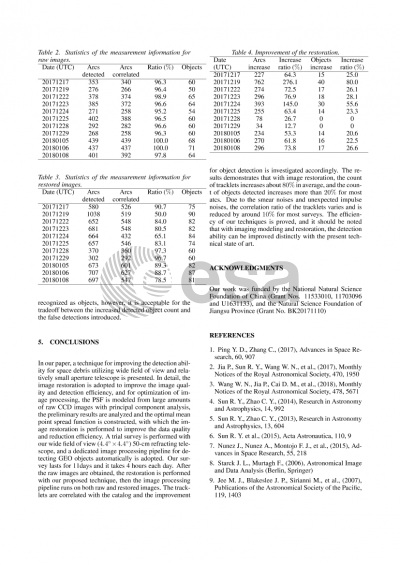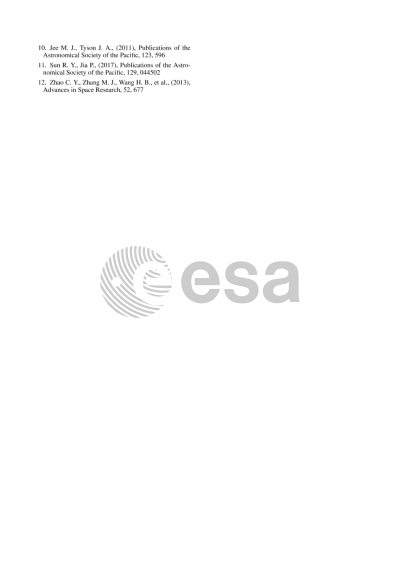Document details

Abstract
Optical survey is an efficient technique to survey space debris, especially for the ones in MEO and GEO orbital regions. Utilizing wide field of view and relatively small aperture telescope is a popular and costless way to perform space debris surveys, considering several objects may appear in the frame at the same time and the count of the surveying fields can be reduced distinctly. However, due to the optics defects of the telescope as well as the limited aperture size, the detection ability for faint objects is affected. Here image restoration is adopted to improve the image quality and detection efficiency. To optimizing image processing, the imaging process is modeled (referred as point spread function) from raw CCD images with principal component analysis, the preliminary results are analyzed and the optimal mean point spread function is constructed, with which the image restoration is performed to improve the data quality and reduction efficiency. To test the efficiency and reliability, a survey is performed with our wide field of view (4.4×4.4 degrees) 50-cm refracting telescope. In our survey, the stare mode is adopted and the dedicated image processing pipeline for detecting GEO objects automatically is presented. Our survey lasts for 11 days and it takes 4 hours each day. While the raw images are obtained, the restoration is performed with our proposed technique, then the image processing pipeline runs on both raw and restored images. The tracklets are correlated with the catalog and the improvement for object detection is investigated accordingly. The results demonstrates that with image restoration, the count of tracklets increases about 80% in average, and the count of objects detected increases about 30%. Due to the smear noises and unexpected impulse noises, the correlation ratio of the tracklets varies and is reduced by around 10% for most surveys. However, it should be noted that with imaging modeling and restoration, the detection ability can be improved distinctly with the present technical state of art, and it deserves wider application in optical space debris observations.
Preview
